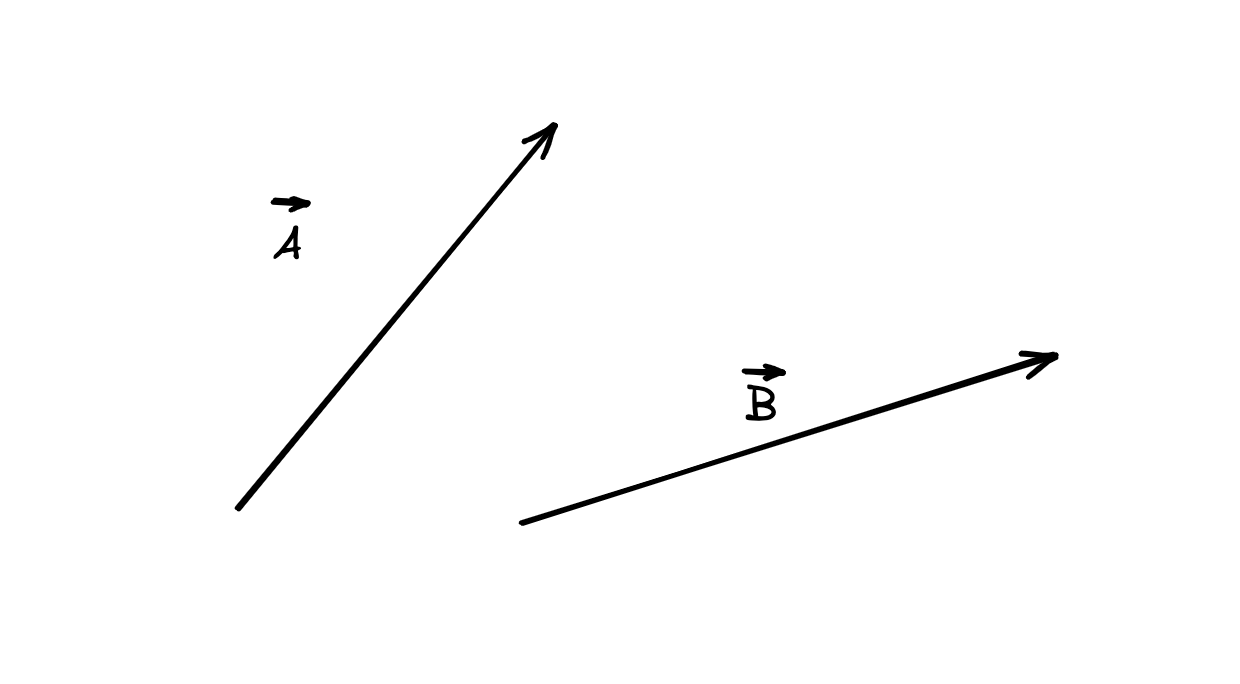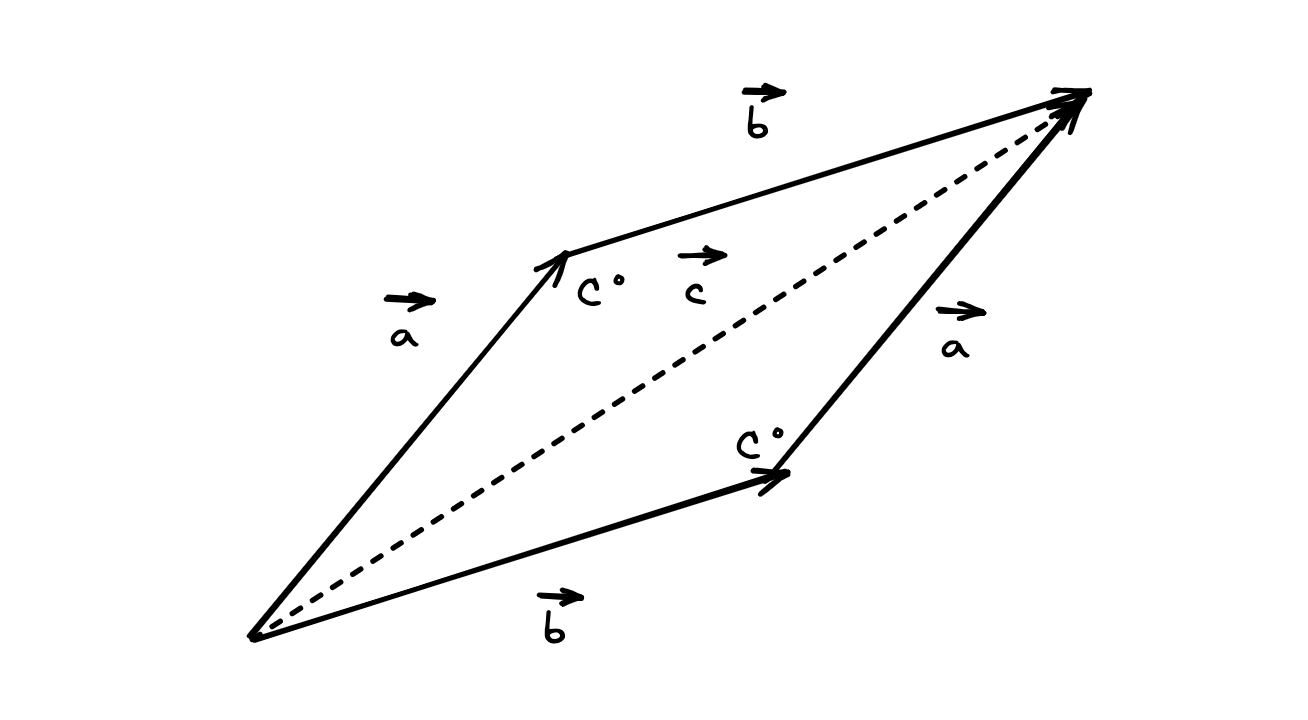Scalars
- Value only with magnitude
- Distance (s), in m
- Speed (|v| or v), in
- Time (t), in s
Vectors
- Value that require direction and magnitude to be fully described
- If they don’t give you a direction, say “in the direction the body is travelling”
- Displacement (s) in m
- Velocity (v), in
- Acceleration (a), in
- Force (F), in
Vector Diagrams
- Vectors can be represented in a diagram
- Arrows are used to represent vector quantities
- Must be some vector on each side
- Must be resolved
Adding Vectors
For 2 Vectors A and B

We can use the triangle method:

and use the Cosine Rule to find the magnitude of side c:
and the Sine rule to find the angle it makes from the x axis. They’ll usually give you another angle, to add to this value, as this is not connected to the x or y axis.
where the capital letter is the angle opposite the lower-case letter
- E.g., angle A is opposite side a. This also works for the reciprocals of this equation.
We can also use the parallelogram method, and use the methods described above

There’s also adding vector components, but that’s a bit complicated, and we don’t need to know that at this point in time.